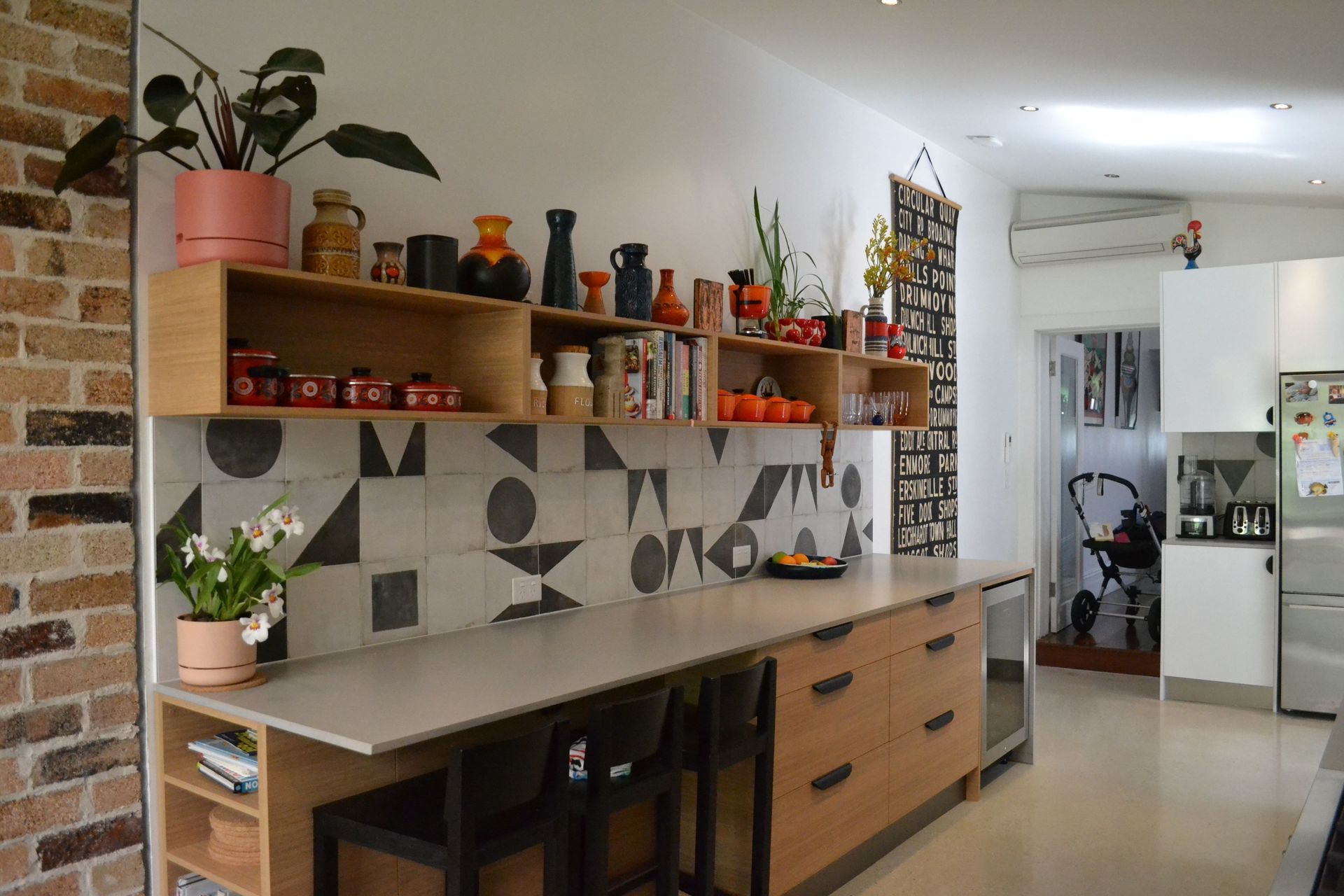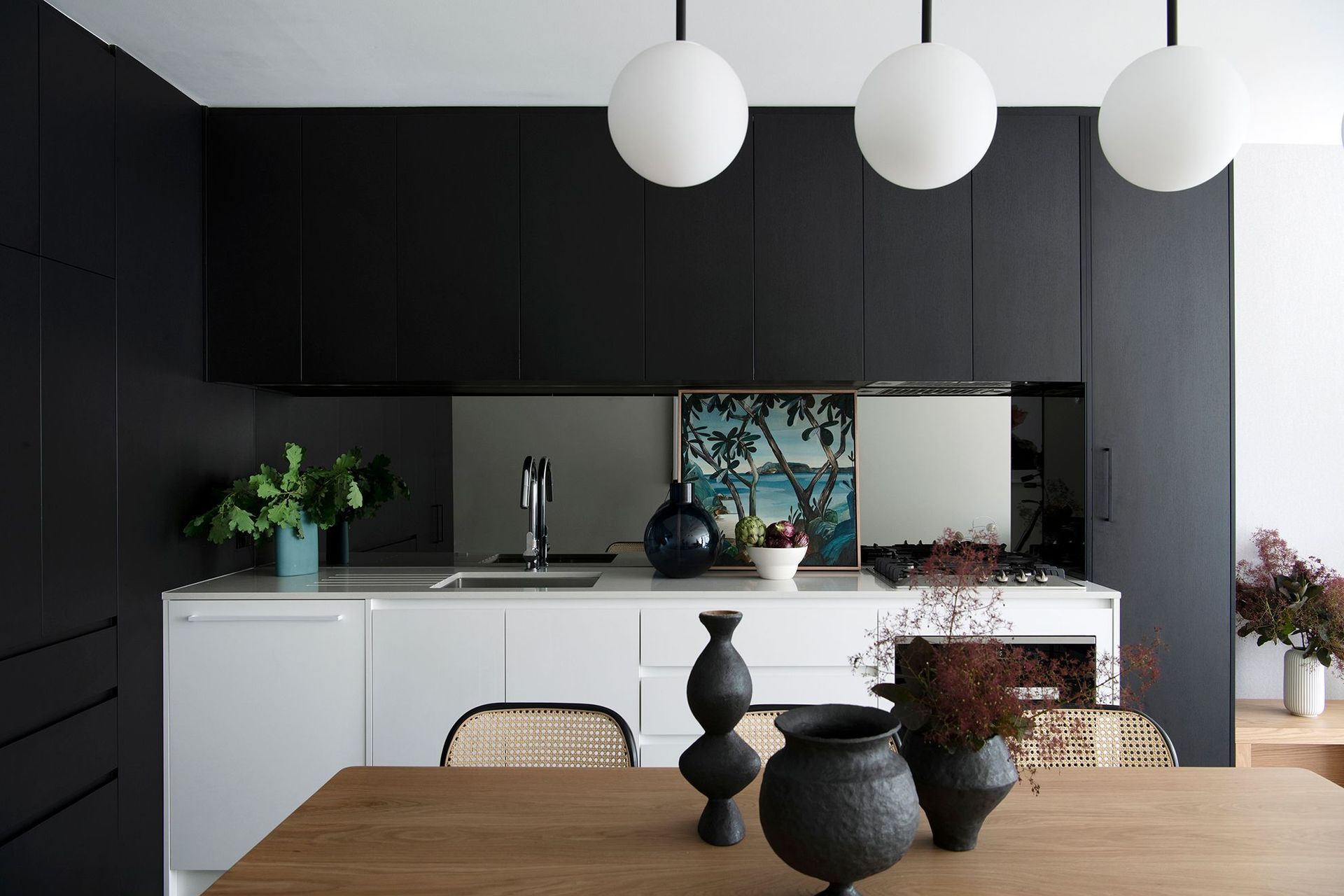How to choose a kitchen splashback
Written by
21 April 2022
•
6 min read

With the essential role of shielding the walls of your kitchen from heat, steam and cooking splatters, a splashback is a non-negotiable feature in every kitchen. With so many options available to you, however, it isn't always easy to choose which one will suit the style of your kitchen and also go the distance.

What can a splashback be made out of?
When it comes to your splashback, there are countless materials to choose from. Tiles and glass are among the more traditional materials, according to Graeme Metcalf, kitchen designer at Dan Kitchens, while natural and engineered stone are more contemporary options.
Tiles, which are endlessly customisable, have made a big comeback as a splashback material in recent years. Glass – coloured, mirrored, or textured – is another timeless option. Stone is also a popular material, says Graeme. Engineered stone and Corian offer a natural look with the benefit of being non-porous and therefore easier to maintain than their natural counterparts. Premium materials such as marble and concrete may be beautiful, but they do require more upkeep – they are porous and may need regular resealing.
If you love a clean, industrial look, a stainless-steel splashback is another option. Commonly used in commercial contexts, it is an increasingly popular and practical choice for residential kitchens.

What are the most popular splashback materials?
The splashback is one of the final touches in a kitchen build or renovation because precise measurements of the space cannot be taken until the bench and cabinetry have been fitted. Being able to look at the rest of the kitchen prior to having to make a decision can make working out which material and style would suit the space much easier.
“Pairing the splashback with the benchtop is very popular at the moment – the coordination lends itself to a sophisticated look,” says Graeme.
Natural and natural-looking materials, including engineered stone and concrete are booming in popularity, thanks to the minimalist, ultra-contemporary look they create. Although no one interacts with the splashback, it is a highly visible feature of the kitchen.
Lenny Sacco, principal designer at Base Building Design and Interiors is seeing an emergence of splashbacks that make a statement.
"The varying tones and veining of natural stone make a statement and can be viewed like artwork over the length of a splashback," Lenny says. "It's an area that is usually within your direct sightline and is the perfect place to make that bold statement within your kitchen."

Tiles have seen a resurgence in popularity, which Graeme credits to their ability to be used to express personality.
“Tiles can be used very effectively to create a textured focal point in the kitchen; we are seeing a lot of very beautiful and interesting tiled splashbacks thanks to the variety of colours and shapes that are now available,” he says.
Studio Gestalt head designer Warren Au agrees.
“We are seeing some beautiful contemporary, minimalistic, structural mosaics,” Warren says. “Zellige tiles and brassy metals are also super popular at the moment – thanks to their rich brassy colour they make a pop in the kitchen," he says.
Zellige tiles are handcrafted, Moroccan-style tiles that can be used to add character and texture.

Which splashback materials are the most sustainable?
The kitchen can be one of the most difficult areas of the house to fit out sustainably because it can be difficult to remove and separate parts of the fitout in order to recycle them.
“Stainless steel is the easiest splashback material to recycle because the sheet can be easily detached in one piece and then recycled. However, many manufacturers are now moving towards a more sustainable future with initiatives such as incorporating recycled materials into their products,” explains Graeme.
“Engineered stone suppliers, for example, are increasingly incorporating recycled material into their slabs, proving that the future of kitchen materials is a climate-conscious one.”

Low-maintenance and long-lasting splashbacks
Practicality and durability are important given that the kitchen is the workhorse of the house. Smooth, non-porous, easy-to-clean materials tend to be the most practical.
“Glass is a very practical material because it is non-porous, while engineered stone has much the same qualities of glass, but can hide a bit of grime," says Graeme. "Tiles, too, are relatively practical because although grout can stain, it is very easy to seal."
While visually stunning, porous materials such as concrete and natural stone need regular sealing to maintain their good looks. "If you love a material, it can be done, but it pays to consider the necessary maintenance before making a commitment,” Graeme says. “In order to prevent them from being stained by kitchen splashes, it is essential to be diligent about cleaning porous materials as soon as they are marked."
According to Lenny, porcelain is a great alternative to natural stone if you’re looking for that easy-to-clean quality.
Stainless steel is also easy to clean and maintain, although it is worth being aware that it is easily marked by contact from anything made of metal, leading it to develop a ‘patina’ texture over time. In terms of longevity, engineered stone splashbacks come out on top, followed by glass and stainless steel. Tiles tend to age slightly faster, because of the potential for grout to stain.

Installing a splashback
Access for installation can be challenging particularly if you live in an apartment, which can limit your choice of splashbacks. If the splashback is in one piece, it may be too large to fit in a lift or up the stairwell, so can require a crane to get it into the building via windows - if the window size allows it.
Glass, stone, porcelain and Corian generally need to be installed by a professional, but it is possible to install a tiled splashback yourself, if you’re game. Having said that, Graeme recommends having an expert do the install if you’re not an experienced tiler, to ensure you're happy with the outcome.

What about the cost?
From tiles to stone, you’re likely to find that there are less expensive as well premium versions of every material. The size, as well as any customisation required, will also influence the cost of your splashback. That being said, some materials tend to be easier on the budget than others.
“Stainless steel is on the less expensive side because it is easy to fabricate, alongside tiles which also tend to be on the less expensive end of the spectrum," explains Graeme. "Engineered stone and glass tend to be a little more expensive, although it is worth considering that they will last a very long time, so paying a little more can be worthwhile in the long run."
Natural and porcelain stone sit at the premium end of the spectrum when it comes to the price of splashback materials.
Words by Madeline Sarich